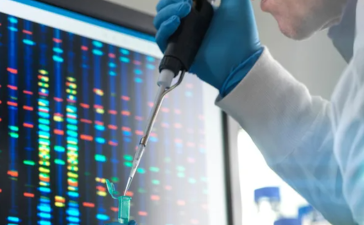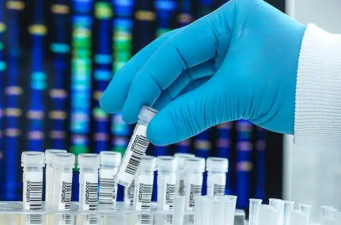How Safe Are DNA Results Stored by Testing Companies?
In recent years, with the rapid development of biotechnology, genetic testing has gradually entered the public eye. Whether used for disease risk prediction, personalized health management, paternity testing, or ancestry analysis, genetic testing has an increasingly broad application. However, while the public enjoys the convenience of a wide range of genetic testing products on the market, they inevitably raise questions: Can genetic testing truly accurately predict disease? Is our genetic data secure?
In recent years, with the rapid development of biotechnology, genetic testing has gradually entered the public eye. Whether used for disease risk prediction, personalized health management, paternity testing, or ancestry analysis, genetic testing has an increasingly broad application. However, while the public enjoys the convenience of a wide range of genetic testing products on the market, they inevitably raise questions: Can genetic testing truly accurately predict disease? Is our genetic data secure?
Principles and Technical Foundations of Genetic Testing

Genetic testing analyzes an individual's DNA sequence to identify the genetic information contained within, thereby determining an individual's potential risks or characteristics regarding health, disease, and traits. Currently, mainstream genetic testing technologies include whole-genome sequencing (WGS), whole-exome sequencing (WES), and gene microarrays (SNP microarrays).
Each of these technologies has its advantages and disadvantages: Whole-genome sequencing offers the widest coverage and most comprehensive information, but is relatively expensive. Gene microarrays, by detecting specific genetic loci, enable rapid, low-cost screening, making them suitable for mass use. Different technologies are suitable for different testing purposes, such as disease screening, drug response prediction, or ancestry analysis.
Can genetic testing accurately predict disease?
- Genetic disease prediction is relatively accurate.
Genetic testing has high accuracy for single-gene genetic diseases, such as thalassemia and cystic fibrosis. These diseases are typically caused by specific gene mutations. Once the relevant mutation is detected, the risk of developing the disease can be largely determined.
- Predicting multi-gene diseases still has limitations.
However, for most common diseases, such as diabetes, hypertension, and cardiovascular disease, the pathogenesis is complex, influenced by multiple genes and environmental factors. Current genetic testing can only provide risk assessments, not precise predictions. In other words, genetic testing can tell you that you are at "high risk" but cannot guarantee that you will develop the disease.
- Individual differences and environmental factors cannot be ignored.
Besides genes themselves, environmental factors such as lifestyle, dietary habits, and psychological state also play a significant role in disease development. Therefore, even if genetic testing indicates a high risk for a particular disease, scientific interventions can still reduce or even prevent the disease.

The security risks of genetic data cannot be ignored
- Increased risk of data leakage
Genetic data contains a large amount of personal privacy information. Once leaked, it could be used for illegal purposes, such as identity fraud and genetic discrimination. In recent years, some genetic testing companies have sparked controversy due to their inadequate data protection practices, even facing allegations of data misuse by third-party organizations.
- Blurred Lines Between Data Ownership and Use
Currently, most genetic testing companies specify in their user agreements that they have the right to use user data for research or commercial development after anonymization. However, this "default authorization" model has raised public concerns about data sovereignty.
